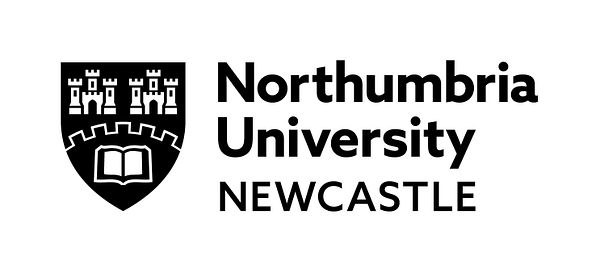
Press release -
Discovery of elusive solar waves that could power the Sun's corona
Researchers have achieved a breakthrough in solar physics by providing the first direct evidence of small-scale torsional Alfvén waves in the Sun's corona – elusive magnetic waves that scientists have been searching for since the 1940s.
The discovery, published today in Nature Astronomy, was made using unprecedented observations from the world's most powerful solar telescope, the U.S. National Science Foundation (NSF) Daniel K. Inouye Solar Telescope in Hawaii.
The findings could finally explain one of the Sun's greatest mysteries – how its outer atmosphere the corona, reaches temperatures of millions of degrees while its surface is only around 5,500°C.
Alfvén waves, named after Nobel Prize winner Hannes Alfvén who predicted their existence in 1942, are magnetic disturbances that can carry energy through plasma.
Scientists have spotted larger, isolated versions of these waves before – normally related to solar flares. However, this is the first time that the small twisting type, that are present all the time and could power the Sun, have been directly observed.
UKRI Future Leader Fellow Professor Richard Morton, a Professor within Northumbria University’s School of Engineering, Physics and Mathematics, led the research. He said: “This discovery ends a protracted search for these waves that has its origins in the 1940s. We've finally been able to directly observe these torsional motions twisting the magnetic field lines back and forth in the corona."
The breakthrough was made possible by the unique capabilities of the Daniel K. Inouye Solar Telescope's Cryogenic Near Infrared Spectropolarimeter (Cryo-NIRSP), the most advanced coronal instrument of its kind.

This cutting-edge spectrometer can see incredibly fine details in the corona and is highly sensitive to changes in the movement of plasma.
With its four-meter-wide mirror – four times larger than previous solar telescopes – the Daniel K. Inouye Solar Telescope, built and operated by the NSF National Solar Observatory, represents two decades of international planning and development.

Northumbria University has played a crucial role in its development as part of a UK consortium that designed cameras for the telescope's Visible Broadband Imager, building on the University's established reputation in observations of the solar atmosphere.
Professor Morton won time to use the telescope while it was still being tested and used the instrument to track the movement of iron, heated to 1.6 million degrees Celsius, in the corona.
The key breakthrough came from Professor Morton developing entirely new analytical techniques to separate different types of wave motion in the data. As he explains: “The movement of plasma in the sun's corona is dominated by swaying motions. These mask the torsional motions, so I had to develop a way of removing the swaying to find the twisting.”
While the more familiar ‘kink’ waves cause entire magnetic structures to sway back and forth and are visible in film captured of the Sun, the newly detected torsional Alfvén waves cause a twisting motion that can only be detected through spectroscopic analysis – measuring how plasma moves toward and away from Earth, creating characteristic red and blue shifts on opposite sides of magnetic structures.

The discovery has profound implications for understanding how the Sun works. The corona, the Sun's outermost atmosphere visible during solar eclipses, is heated to temperatures exceeding one million degrees Celsius – hot enough to accelerate plasma away from the Sun as the solar wind that fills our entire solar system.
The research represents a major international collaboration, with co-authors from Peking University in China, KU Leuven in Belgium, Queen Mary University of London, the Chinese Academy of Sciences, and the NSF National Solar Observatory in Hawaii and Colorado.
Understanding these fundamental processes has practical importance for space weather prediction. The solar wind carries magnetic disturbances that can disrupt satellite communications, GPS systems, and power grids on Earth. Alfvén waves may also be the source of ‘magnetic switchbacks’ – significant carriers of energy in the solar wind that have been observed by NASA's Parker Solar Probe.
“This research provides essential validation for the range of theoretical models that describe how Alfvén wave turbulence powers the solar atmosphere,” added Professor Morton. “Having direct observations finally allows us to test these models against reality.”

The team anticipates this discovery will spark further investigations into how these waves propagate and dissipate energy in the corona. The ability of the Daniel K. Inouye Solar Telescope's Cryo-NIRSP instrument to provide high-quality spectra opens new possibilities for studying wave physics in the solar atmosphere.
The research was supported by UKRI Future Leaders Fellowships, the National Natural Science Foundation of China, and the European Union's Horizon Europe programme.
This is the third paper Professor Morton has published this year in relation to his research into Alfvén waves. In April 2025 the paper High-frequency Coronal Alfvénic Waves Observed with DKIST/Cryo-NIRSP was published in The Astrophysical Journal, followed by the paper On the Origins of Coronal Alfvénic Waves, published in June 2025 in The Astrophysical Journal Letters.
FURTHER INFORMATION:
- The paper Evidence for small-scale torsional Alfvén waves in the solar corona was published in Nature Astronomy on 24 October 2025. DOI: 10.1038/s41550-025-02690-9
- Visit the Northumbria University Research Portal to find out more about Professor Richard Morton’s work.
RELATED NEWS:
- Northumbria to help build world’s biggest solar telescope in £220 million project
- Researchers find evidence for a new fundamental constant of the Sun
- Global magnetic field of the solar corona measured for the first time
- £1.2 million awarded to improve our understanding of the Sun
- Recognition for Northumbria physicist’s solar discoveries
- First successful routine measurements of Sun’s magnetic field in the corona
PHOTO CAPTIONS:
Torsional Lines Graphic_JWilliams (Full Res): An artist’s representation of twisting magnetic waves (inset) revealed for the first time by the NSF Inouye Solar Telescope. These upward-traveling torsional waves coexist with other wave types and may be an essential ingredient in solving the mystery of why the Sun’s atmosphere is so hot. For more information see Morton et al. (2025). Credit: NSF/NSO/AURA/J. Williams
Torsional Waves Figure (Full Res): Overview of observations and findings from the study. Clockwise from left, the panels show the Sun’s corona observed by NASA’s Solar Dynamics Observatory using the Atmospheric Imaging Assembly in the extreme ultraviolet. This shows context for Cryo-NIRSP data—Inouye’s field of view is circled and the red dashed line shows spectrograph slit position. The upper right panel shows how the Cryo-NIRSP data evolve over time, and enhances extractions of the residual velocity signals on separate sides of thin coronal loops. The opposite signed velocities, colored blue and red in the figure, correspond to the twisting motions of the coronal feature, which is shown as well in the artist’s impression panel. Finally, these findings are corroborated using advanced 3D simulations of loops, which show the same type of signatures.(See paper for full details). Credit: Morton et al. (2025)
CryoNirsp High Res: Cryo-NIRSP (right), the Inouye’s advanced coronal spectropolarimeter, used to track twisting plasma motions in the Sun’s corona. Credit: NSF/NSO/AURA
Telescope exterior: Exterior of the U.S. National Science Foundation (NSF) Daniel K. Inouye Solar Telescope in Hawaii. Credit: NSF/NSO/AURA
Topics
Categories
UNIVERSITY OF THE YEAR 2022 (Times Higher Education Awards)
Northumbria is a research-intensive university that unlocks potential for all, changing lives regionally, nationally and internationally.
Two thirds of Northumbria's undergraduate students come from the North East region and go into employment in the region when they graduate, demonstrating Northumbria's significant contribution to social mobility and levelling up in the North East of England.
Find out more about us at www.northumbria.ac.uk
--- Please contact media.communications@northumbria.ac.uk with any media enquiries or interview requests ---










